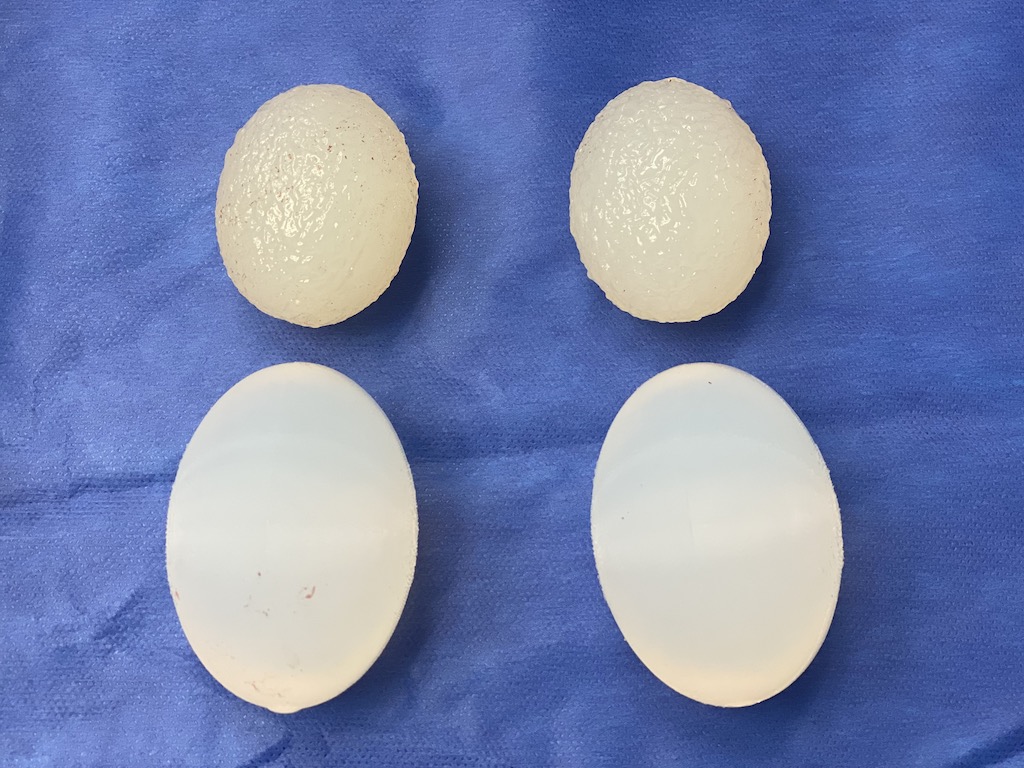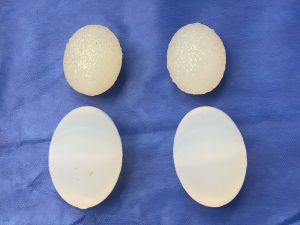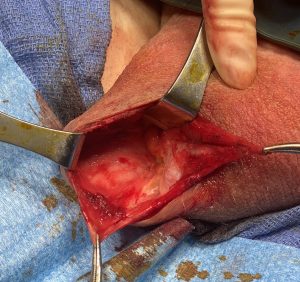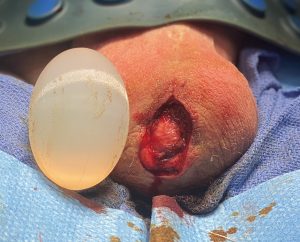Background: While not precisely defined there is an aesthetic relationship between the size of the penis and the underlying scrotum. (penile-scrotal proportion) While it defies a specific measurable ratio or number to determine whether there is a good size match between the elongated penis and the more rounded inferior scrotum, it is obvious when it is seen. It can be caused by testicular atrophy, penile enlargement, inadequate testicle implants or various combinations thereof.
One of the most common causes of an inadequately sized scrotum is penile enlargement. Primarily done by a prosthesis this primarily increases penile girth more son than length. As the diameter of the penis becomes bigger, particularly at its base, the scrotum can become disproportionately smaller. This becomes magnified in many men who have penile prostheses as they are usually on supplemental testosterone which shrinks their testicles down to sizes usually 3.5cms or less.
Standard size testicle implants can be used during or after penile enlargement to improve the penile-scrotal disproportion. They are most commonly placed in a side by side technique due to the testicular atrophy. But whether a standard size testicle is made of saline or solid silicone their maximum size is usually no greater than 5 cm, which while a good improvement over a shrunken 3.5cm testicle or smaller, it is usually not ideal to really improve the scrotal disproportion and runs the risk of creating an undesirable ‘4-pac’.
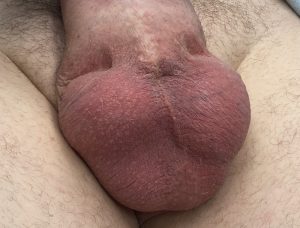
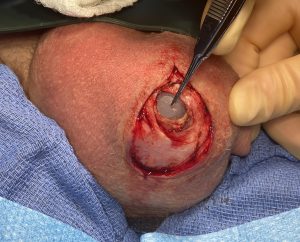
They were 5.0cm textured solid testicle implants. The texturing was very mild like is seen on some body implants but not aggressive texturing as seen on breast implants. (I call it aesthetic texturing)
New custom 7.0cm testicle implant replacements were compared to those removed showing the increase in implant size/volume. In addition the softness of the new custom implants was much greater than that of the implants removed.
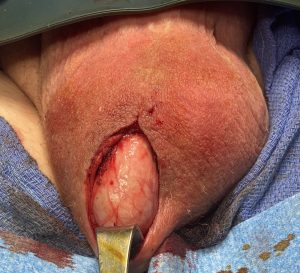
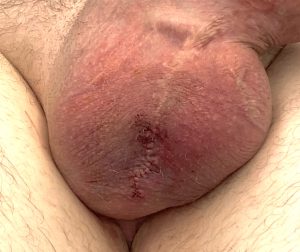
To satisfactorily treat most cases of penile-scrotal disproportion, custom testicle implants are almost always needed. To get an adequately low implant position in the scrotum, a small midline raphe incision is best used. With indwelling implants release/removal of the capsules are needed to allow the new implants to be placed without undue tension of the tissues.
Case Highlights:
1) Iatrogenic penile-scrotal disproportion is caused by an augmented penis that is substantially larger (out of proportion) to the scrotum that contains either natural testicles or now too small testicle implants.
2) Replacement of smaller testicle implants with larger implants requires a combination of a custom design for adequate size and internal capsulotomies with partial capsulectomies.
3) Improving penile-scrotal disproportion with custom testicle implants requires a size of at least 6.5cms.
Dr. Barry Eppley
Indianapolis, Indiana

